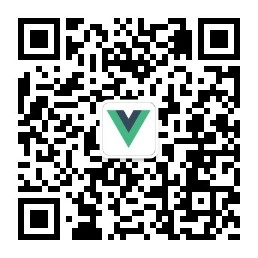前言
Vue 提供了各种各样的通讯,其中包括兄弟间的通讯和非兄弟间的通讯,借此机会做个总结,查阅起来方便。如果喜欢的话可以帮忙点个赞 👍 或者关注一下 😋
1、props
目录结构
components
├── Parent.vue // 父亲
├── Son1.vue // 儿子1代码结构
在父亲组件中使用儿子组件,给儿子通过:date="xxx"单向传值
<template>
<div>
<div>爸爸:{{date}}</div>
<Son1 :date="date"></Son1>
</div>
</template>
<script>
import Son1 from "./son1";
export default {
components: { Son1 },
data() {
return {
date: 1,
};
},
};
</script>儿子组件通过props接受父组件传过来的值
<template>
<div>儿子:{{date}}</div>
</template>
<script>
export default {
props: {
date: {
type: Number, //校验类型
default: "1",
},
},
};
</script>2、$emit
目录结构
components
├── Parent.vue // 父亲
├── Son1.vue // 儿子1代码结构
子组件通过触自身的方法来触发$emit方法,再触发父组件的方法,通过回调传参的方式将修改的内容传递给父组件
<template>
<div>
<div>儿子:{{date}}</div>
<button @click="changeNum">修改</button>
</div>
</template>
<script>
export default {
props: {
date: {
type: Number,
default: "1",
},
},
methods: {
changeNum() {
this.$emit("changeNum", 2);
},
},
};
</script>
父组件接受回调params参数,即爸爸需要给儿子绑定了一个自定义的事件,$on("changeNum",params)
<template>
<div>
<div>爸爸:{{date}}</div>
<Son1 :date="date" @changeNum="changeNum"></Son1>
</div>
</template>
<script>
import Son1 from "./son1";
export default {
components: { Son1 },
data() {
return {
date: 1,
};
},
methods: {
changeNum(params) {
this.date = params;
},
},
};
</script>目录结构
components
├── Parent.vue // 父亲
├── Son1.vue // 儿子1代码结构
子组件通过$emit("update:xxx")发射事件
<template>
<div>
<div>儿子:{{date}}</div>
<button @click="changeNum">修改</button>
</div>
</template>
<script>
export default {
props: {
date: {
type: Number,
default: "1",
},
},
methods: {
changeNum() {
this.$emit("update:date", 2);
},
},
};
</script>父组件通过:xxx.sync="xxx"接受参数
<template>
<div>
<div>爸爸:{{date}}</div>
<Son1 :date.sync="date"></Son1>
</div>
</template>
<script>
import Son1 from "./son1";
export default {
components: { Son1 },
data() {
return {
date: 1,
};
},
};
</script><Son1 :date.sync="date"></Son1>
//这个写法是上面的替代品 默认组件内部触发 update:count 规定写法
<Son1 :date="date" @update:date="val=>date=val"></Son1>目录结构
components
├── Parent.vue // 父亲
├── Son1.vue // 儿子1代码结构
子组件触发的事件只能是input事件,接收props的属性名只能叫value
<template>
<div>
<div>儿子:{{value}}</div>
<button @click="changeNum">修改</button>
</div>
</template>
<script>
export default {
props: {
value: {
type: Number,
default: 1,
},
},
methods: {
changeNum() {
this.$emit("input", 2);
},
},
};
</script>父组件通过v-model接收参数
<template>
<div>
<div>爸爸:{{value}}</div>
<Son1 v-model="value"></Son1>
</div>
</template>
<script>
import Son1 from "./son1";
export default {
components: { Son1 },
data() {
return {
value: 1,
};
},
};
</script><Son1 :value="value" @input="val=>value=val"></Son1>
//这个写法是上面的替代品 默认组件内部触发 input 规定写法
<Son1 v-model="value"></Son1>
v-model局限只能传递一个属性 如果只有一个 可以使用v-model多个依然需要使用.sync
3、$parent和 $children
目录结构
components
├── Parent.vue // 父亲
├── Son1.vue // 儿子1
├── Grandson1.vue //孙子1代码结构
如下场景:孙子想要给爷爷传递数据,孙子需要找到爷爷身上的事件去传递$parent.$emit
<template>
<div>
<div>孙子{{value}}</div>
<button @click="$parent.$emit('change',3)">修改</button>
</div>
</template>
<script>
export default {
props: {
value: {
type: Number,
default: "",
},
},
};
</script>儿子组件使用孙子组件
<template>
<div>
<div>儿子:{{value}}</div>
<grandson1 :value="value"></grandson1>
</div>
</template>
<script>
import grandson1 from "./grandson1";
export default {
components: {
grandson1,
},
props: {
value: {
type: Number,
default: 1,
},
},
};
</script>爸爸身上给孙子自定义change事件
<template>
<div>
<div>爸爸:{{value}}</div>
<Son1 @change="val=>value=val" :value="value"></Son1>
</div>
</template>
<script>
import Son1 from "./son1";
export default {
components: { Son1 },
data() {
return {
value: 1,
};
},
};
</script>如果层级很深那么就会出现
$parent.$parent.....我们可以封装一个$dispatch方法向上进行派发
Vue.prototype.$dispatch = function $dispatch(eventName, data) {
let parent = this.$parent;
while (parent) {
parent.$emit(eventName, data);
parent = parent.$parent;
}
};相同的道理,如果既然能够向上寻找父亲,就能向下寻找儿子,也可以封装一个向下派发的方法
$broadcast
Vue.prototype.$broadcast = function $broadcast(eventName, data) {
const broadcast = function () {
this.$children.forEach((child) => {
child.$emit(eventName, data);
if (child.$children) {
$broadcast.call(child, eventName, data);
}
});
};
broadcast.call(this, eventName, data);
};4、$attrs和 $listeners
目录结构
components
├── Parent.vue // 父亲
├── Son1.vue // 儿子1
├── Grandson1.vue //孙子1$attrs批量向下传入属性
<template>
<div>
<div>爸爸:{{value}}</div>
<Son1 @change="val=>value=val" :value="value"></Son1>
</div>
</template>
<script>
import Son1 from "./son1";
export default {
components: { Son1 },
data() {
return {
value: 1,
};
},
};
</script>在儿子组件中使用 $attrs属性,配合v-bind可以将属性继续向下传递
<template>
<div>
<div>儿子:{{$attrs.value}}</div>
<grandson1 v-bind="$attrs"></grandson1>
</div>
</template>
<script>
import grandson1 from "./grandson1";
export default {
components: {
grandson1,
},
mounted() {
console.log(this.$attrs);
},
};
</script>注意一点:在使用 $attrs的时候,如果组件中使用了
props就会将属性从当前attrs移除掉
在孙子组件中使用 $attrs属性,可以将属性继续向下传递
<template>
<div>
<div>孙子{{$attrs.value}}</div>
</div>
</template>
<script>
export default {
//props: {
// value: Number,
//},
mounted() {
console.log(this.$attrs);
},
};
</script>
如果爸爸传递给儿子元素, 儿子有三个属性用不到, 孙子传递给孙子,但是不想在页面上这个属性,可以设置
inheritAttrs: false
$listeners批量向下传入方法
<template>
<div>
<div>爸爸:{{value}}</div>
<Son1 @click="change" :value="value"></Son1>
</div>
</template>
<script>
import Son1 from "./son1";
export default {
components: { Son1 },
data() {
return {
value: 1,
};
},
methods: {
change() {
this.value = 2;
},
},
};
</script>可以在son1组件中使用$listeners属性,配合v-on可以将方法继续向下传递
<template>
<div>
<div>儿子:{{$attrs.value}}</div>
<grandson1 v-bind="$attrs" v-on="$listeners"></grandson1>
</div>
</template>
<script>
import grandson1 from "./grandson1";
export default {
components: {
grandson1,
},
mounted() {
console.log(this.$attrs);
console.log(this.$listeners);
},
};
</script>孙子组件可以直接使用$listeners上的方法
<template>
<div>
<div>孙子{{$attrs.value}}</div>
<button @click="$listeners.click"></button>
</div>
</template>
<script>
export default {
mounted() {
console.log(this.$attrs);
console.log(this.$listeners);
},
};
</script>5、Provide & Inject
目录结构
app.vue
components
├── Parent.vue // 父亲
├── Son1.vue // 儿子1
├── Grandson1.vue //孙子1代码结构
在父级声明一个公共数据
export default {
provide() {
return { vm: this };
},
};在子组件中可以注入原理,会将数据挂载在当前实例上
<template>
<div>
<div>孙子</div>
</div>
</template>
<script>
export default {
inject: ["vm"],
mounted() {
console.log(this);
},
};
</script>注意事项:这个方法使用之后比较混乱,它一般
不会在业务代码中使用,经常是在组件库或者多级通信,为了方便你可以使用provide。
6、ref
目录结构
components
├── Parent.vue // 父亲
├── Son1.vue // 儿子1代码结构
ref获取的是真实的dom元素,如果放到组件上代表的是当前组件的实例。 父组件中可以直接获取子组件的方法或者数据。
<template>
<div>
<div>爸爸</div>
<Son1 ref="son"></Son1>
</div>
</template>
<script>
import Son1 from "./son1";
export default {
components: { Son1 },
mounted() {
this.$refs.son.show();
},
};
</script><template>
<div>
<div>儿子</div>
</div>
</template>
<script>
export default {
methods: {
show() {
console.log(1);
},
},
};
</script>注意事项:
ref不要重名, 但是当且仅当使用v-for的时候会导致出现数组情况
7、EventBus
目录结构
main.js
components
├── Grandson1.vue // 孙子1
├── Son2.vue // 儿子2代码结构
EventBus可用于跨组件通知(不复杂的项目可以使用这种方式)
Vue.prototype.$bus = new Vue();Grandson1组件和Son2相互通信
<template>
<div>孙子1</div>
</template>
<script>
export default {
mounted() {
this.$nextTick(() => {
this.$bus.$emit("test", "go");
});
},
};
</script>这里的儿子2组件只能使用$on来触发Grandson1组件事件
<template>
<div>儿子2</div>
</template>
<script>
export default {
mounted() {
this.$bus.$on("test", (data) => {
console.log(data);
});
},
};
</script>8、Vuex
Vuex 是一个专为 Vue.js 应用程序开发的状态管理模式。
9、observable
Vue.observable可以让返回的对象响应式,返回的对象可以直接用于渲染函数和计算属性内,并且会在发生变更时触发相应的更新,可以作为一个简单的store使用
目录结构
store
├── index.js
components
├── hello.vue //函数式组件
├── home.vue 代码结构
store/index.js
import Vue from 'vue';
export const state = Vue.observable({msg:"hello world"});
export const mutation = {
setMsg(paylod){
state.msg = paylod
}
}利用计算属性,响应式的通讯
home.vue
<template>
<div @click="handleClick">home332131{{msg}}</div>
</template>
<script>
import { state, mutation } from "@/store";
export default {
computed:{
msg(){
return state.msg
}
},
methods: {
handleClick() {
mutation.setMsg("你好,世界");
},
},
};
</script>利用渲染函数,响应式通讯
home.vue
<template>
<div>
<hello />
</div>
</template>
<script>
import hello from './hello'
export default {
components:{
hello
},
};
</script>hello.vue
<script>
import { state, mutation } from "@/store";
export default {
props:{
render:Function
},
render(h) {
return h("div",{on:{click:this.handleClick}}, `${state.msg}`);
},
methods:{
handleClick() {
mutation.setMsg("你好,世界");
},
}
}
</script>结尾
以上就是全部内容,欢迎评论指点,一起交流一起进步 🙏🙏🙏🙏
版权声明:著作权归作者所有。商业转载请联系作者获得授权,非商业转载请注明出处。 作者: 小丑同学 原文链接:https://juejin.im/post/6861547167358648327
 Vue.js
Vue.js
